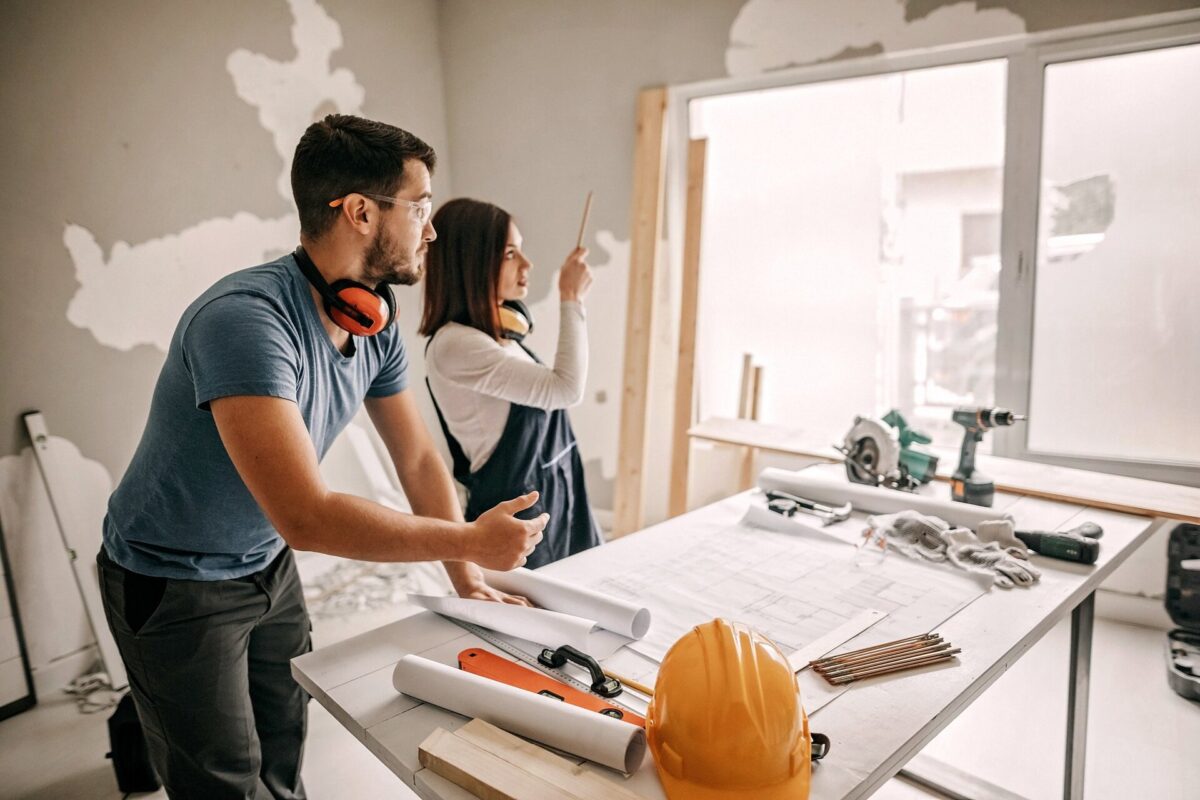Tips for Sustainable Home Renovation

Sustainable home renovation is not just a trend; it’s a responsible and eco-conscious approach to upgrading your living space. In this guide, we’ll delve into various aspects of sustainable home renovation, providing you with valuable insights and tips to make your home greener and more energy-efficient.
Understanding Sustainable Home Renovation
2.1 What is Sustainable Home Renovation?
Sustainable home renovation involves making conscious choices that minimize the environmental impact of the renovation process. It encompasses selecting eco-friendly materials, optimizing energy efficiency, and embracing practices that contribute to a healthier planet.
2.2 Importance of Sustainable Practices
The significance of sustainable practices lies in reducing carbon footprint, conserving resources, and creating a home that aligns with eco-friendly principles. It’s not just about aesthetics; it’s about making a positive impact on the environment.
Planning Your Green Renovation
3.1 Assessing Energy Efficiency
Begin by evaluating your home’s energy efficiency. Conduct an energy audit to identify areas where improvements can be made, such as insulation upgrades or sealing air leaks.
3.2 Choosing Eco-Friendly Materials
Opt for materials with low environmental impact. Recycled, reclaimed, and rapidly renewable resources are excellent choices for flooring, countertops, and other renovation elements.
3.3 Budgeting for Sustainability
Allocate a portion of your renovation budget specifically for sustainable practices. While upfront costs may be slightly higher, the long-term benefits and savings make it a wise investment.
Energy-Efficient Lighting Solutions
4.1 LED vs. Traditional Bulbs
Consider switching to LED lighting. LED bulbs not only consume less energy but also have a longer lifespan, reducing the frequency of replacements.
4.2 Smart Home Integration
Integrate smart lighting systems to optimize energy usage. Smart home technologies allow you to control lighting remotely and schedule energy-efficient settings.
Water Conservation in Renovation
5.1 Low-Flow Fixtures
Install low-flow fixtures in bathrooms and kitchens to minimize water consumption without sacrificing functionality.
5.2 Rainwater Harvesting Systems
Explore rainwater harvesting systems to collect and repurpose rainwater for non-potable uses like watering plants or flushing toilets.
Optimizing Insulation for Efficiency
6.1 Insulation Types and Benefits
Select insulation materials that offer superior thermal performance. Proper insulation reduces heating and cooling costs while providing a comfortable indoor environment.
6.2 Sealing Air Leaks
Addressing air leaks is crucial for energy efficiency. Seal gaps and cracks in windows, doors, and walls to prevent heat loss and drafts.
Renewable Energy Integration
9.1 Solar Panels
Investigate the feasibility of solar panels for your home. Solar energy is a clean and renewable resource that can significantly reduce your reliance on traditional power sources.
9.2 Wind Energy Solutions
In areas with sufficient wind resources, explore the possibility of incorporating small-scale wind turbines for additional renewable energy generation.
Landscaping with Sustainability in Mind
10.1 Native Plants and Drought-Tolerant Landscapes
Opt for native plants that thrive in your region, requiring less water and maintenance. Design a drought-tolerant landscape to conserve water and promote biodiversity.
10.2 Permeable Paving
Choose permeable paving materials for driveways and walkways. This allows rainwater to penetrate the ground, reducing runoff and benefiting the local ecosystem.
Waste Reduction and Recycling Strategies
11.1 Minimizing Construction Waste
Plan your renovation to minimize construction waste. Donate reusable materials and recycle debris to reduce the environmental impact of your project.
11.2 Repurposing and Recycling Materials
Explore creative ways to repurpose existing materials in your home. Salvaged wood or vintage fixtures can add character to your renovation while promoting sustainability.
Smart Home Technologies for Sustainability
12.1 Energy Monitoring Systems
Install energy monitoring systems to track your home’s energy usage. This data can help you identify areas for improvement and optimize energy efficiency further.
12.2 Automated Thermostats
Upgrade to automated thermostats that adjust temperature settings based on your daily routines. This ensures energy is used efficiently, especially when you’re away from home.
Evaluating the Environmental Impact
13.1 Life Cycle Assessments
Consider the life cycle of materials and products used in your renovation. Life cycle assessments help you understand the environmental impact from extraction to disposal.
13.2 Carbon Footprint Reduction
Implement strategies to reduce your renovation’s carbon footprint. This includes choosing local materials to minimize transportation emissions and supporting eco-friendly manufacturing processes.
Financial Incentives for Sustainable Renovations
14.1 Tax Credits and Rebates
Explore available tax credits and rebates for sustainable home renovations. Many governments offer incentives to encourage eco-friendly practices, making your green renovation more affordable.
14.2 Long-Term Cost Savings
While sustainable practices may have upfront costs, consider the long-term savings on energy bills and maintenance. Sustainable renovations often pay for themselves over time.
Conclusion
Embarking on a sustainable home renovation journey not only enhances your living space but also contributes to a greener and healthier planet. By making informed choices in materials, technologies, and practices, you can create a home that aligns with your values and stands as a testament to responsible living.
Frequently Asked Questions (FAQs)
- How much does a sustainable home renovation cost?
The cost varies based on factors like the extent of renovation and chosen eco-friendly materials. While initial costs may be higher, long-term savings often outweigh them.
- Are there government incentives for sustainable renovations?
Yes, many governments offer tax credits and rebates to encourage homeowners to choose sustainable practices during renovations.
- Can I implement sustainable practices in a small renovation project?
Absolutely! Sustainability can be incorporated into projects of any size, from small upgrades to extensive renovations.
- What are the environmental benefits of bamboo flooring?
Bamboo is a rapidly renewable resource, meaning it regrows quickly. Its cultivation has a lower environmental impact compared to traditional hardwoods.
- How can I monitor the energy usage of my renovated home?
Consider installing energy monitoring systems to track and analyze your home’s energy consumption, helping you make informed decisions for further improvements.








